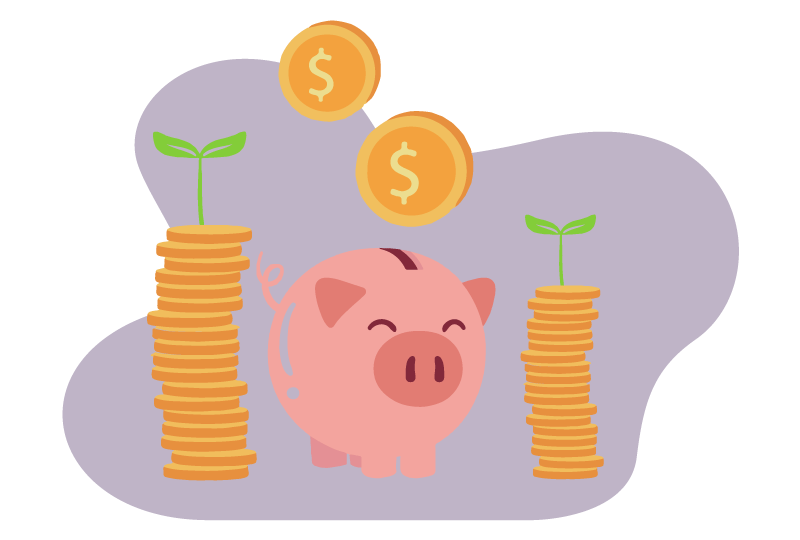RRSP
Quotes in Minutes!
Registered Retirement Savings Plans (RRSP) can help you grow your savings and pay less tax.
What is an RRSP?
A Registered Retirement Savings Plan (RRSP) is set up so Canadians can save for their retirement. This is a savings plan which you, your spouse, your common-law partner, or in the case of a Group RRSP, your employees, can contribute. You can reduce your tax with deductible RRSP contributions. As long as your funds remain in the plan, any money you earn in your RRSP is usually exempt from tax. You generally have to pay tax when you receive payments from the plan.
An RRSP can help you lower your income tax bill, pay for your education, buy your first home, or build a retirement nest egg.
An RRSP not only keeps more money in your pocket by lowering your income tax bill, but your RRSP savings grow faster because you only pay tax when you take the money out. Some plans like the Home Buyers’ Plan even allow tax-free withdrawals, as long as you repay the money within a certain timeframe.
Similarly, if you are looking for Group Retirement plans, a group RRSP can save you even more with easy payroll contributions which give you an immediate tax break, competitive fees on your savings, and sometimes even company matching programs.
How does an RRSP work?
Each year, there is a limit to how much you can contribute to your RRSP. Check your most recent Notice of Assessment (NOA) from the Canada Revenue Agency (CRA) to confirm your maximum contribution limit. You can also view your deduction limit online when you register for CRA’s My Account.
Setting up your RRSP online is simple. You can make a one-time, lump-sum deposit or regular, automatic transfers to an individual RRSP. If you belong to a company-sponsored group RRSP, contributions are usually made directly from your employer’s payroll.
Best age to get an RRSP
There is no minimum age to open your RRSP. But, you have to have earned employment income to earn contribution room. Plus, to contribute more than $2,000 a year, you need to be at least 18 years old. If you’re in your 20’s and making a substantial salary, ($50,000+) then it might be a good time to open your RRSP.
Group RRSP vs Individual RRSP
To put it simply, a Group RRSP works the same way as an individual RRSP, but it is offered through your place of work. It features tax-deferred growth and tax-deductible contributions. The key difference in terms of advantages, is that your employer adds to the equation. Unlike an individual RRSP, members of a Group RRSP are generally not allowed to purchase individual securities.
Group plans can be very flexible in terms of how money is received at retirement. The policy member has the option of purchasing a fixed-term annuity or purchasing a Registered Retirement Income Fund (RRIF), purchasing a life annuity, or taking the money in cash.
How much does it cost to retire in Canada?
You’ll need about 70% of your current income to spend every year in retirement. So if you made $100,000 before retiring, you’ll need $70,000 per year to retire.
Our Reviews
What would you like to save money on?
Put You & Your Family in Good Hands
Experts Ready to Help
5 Star Reviews
Happy Customers
How You Can Get the Most from Your Contributions?
Building up your savings can be challenging in today’s economy, but with the right tools, you can be well on your way to a comfortable life. There is a huge satisfaction when you see your savings grow.
If you want to maximize your savings potential, you can add mutual funds, guaranteed investment certificates (GICs), segregated funds, bonds and stocks to your RRSP or TFSA. Here are a few options that can help you make the most of your contributions:
PAY YOURSELF FIRST WITH PAC PLAN
A pre-authorized chequing (PAC) contribution plan can help you make regular, and automatic contributions to your investments. It treats regular savings like any recurring payment. PAC’s are more effective because the more frequently you contribute, you get the advantage of dollar-cost averaging.
Catch up on unused RRSP contribution room with an RRSP loan
An RRSP loan can grow your savings by allowing you to catch up on RRSP contributions. When you catch up on contributions using a loan, you’re giving your investments the most available time to grow.
Contribute to a spousal RRSP
With a spousal RRSP, the spouse with the higher income makes an RRSP contribution and claims the tax deduction, while the other spouse owns the plan and the money in it. Spousal RRSPs are mostly used to equalize income during retirement, which lowers the overall family tax rate.
Get RRSP Quotes Now


